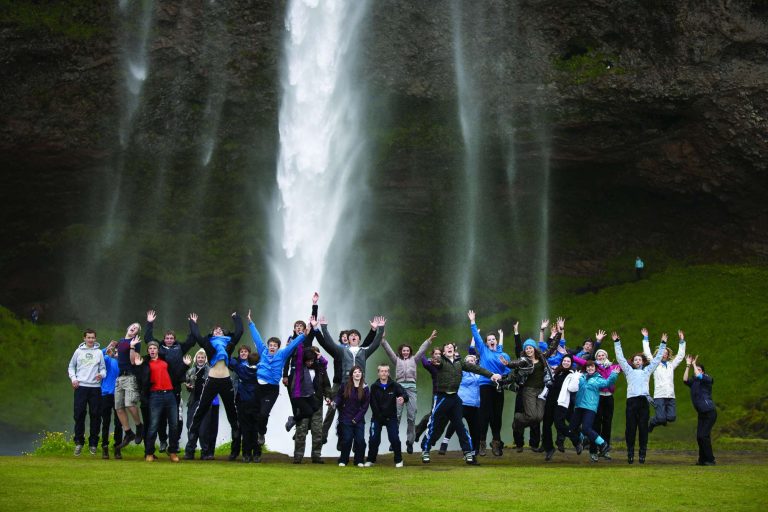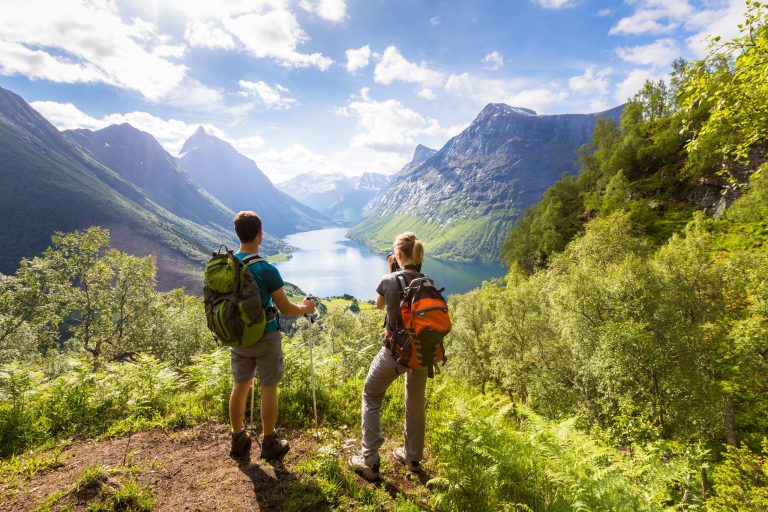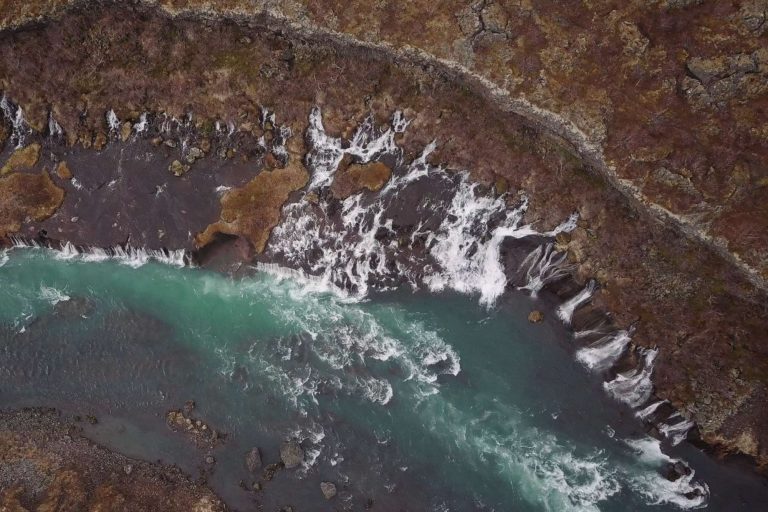Geography Study Topics for Iceland
Iceland provides your students with invaluable hands-on experience and excellent case studies for both coursework and exam preparation. There are a host of possible geography and geology topics that can be explored when visiting Iceland. In addition to the below you may find our multi award winning classroom resources useful.
Tectonic processes, landforms & hazards
Iceland owes its very existence to the divergent margin of the Mid-Atlantic Ridge. The myriad cracks and fissures can easily be viewed at Thingvellir. Your students can also witness hot springs, geysers, boiling mud pools, lava deserts and other fascinating landforms. Boasting some of the most advanced systems in the world to manage natural hazards – earthquakes, volcanic eruptions, avalanches and glacial bursts – Icelanders have a long-standing ability to manage the forces of nature.
Weather processes & hazards
The weather in Iceland can be notoriously variable with a traditional Icelandic saying going – “If you don’t like the weather, just wait 15 minutes and you’ll get something different.” How does Iceland’s location in the North Atlantic cause this variability and what other factors can be considered? How does the southern coastal climate differ from that in the Icelandic highlands?
Climate change
Examine the impacts of climate change on the glaciers of Solheimajokull and Snaefellsjokull which are both retreating at a significant rate each year – does this support the established theory of global warming and what does the future hold for Icelandic glaciers?
Ecosystems
Take a short boat trip off the coast of Reykjavik and there is a good chance you will spot dolphins, whales and orcas as well as many species of bird such as puffins, fulmars, gannets and kittiwakes. Back on dry land, ride traditional Icelandic horses, said to be the purest breed in the world due to strict regulations against importing horses from other regions. Consider the reasons why the government enforces such restrictions.
Coastal processes, landforms & management
Iceland is blessed with a fantastically wild and varied coastline, including the fjords in the west of the country and the spectacular and ever-changing south coast. Dyrholaey, located at the southernmost point on the mainland, was formed by a submarine volcanic eruption around 80,000 years ago and features outstanding examples of headland erosion including a perfect rock arch which gave the peninsula its name – the “island with the hill door”. The south coast superbly demonstrates features associated with changing sea levels and the numerous beaches and dunes offer many opportunities to study coastal processes.
Water & river processes, landforms & management
Rivers are plentiful in Iceland due to the high volume of rain and glacial meltwater. This combination of glacier drainage and semi-arid areas consequently means braided streams are abundant. Also, resulting from the numerous rivers, Iceland boasts an astounding 10,000 waterfalls of varying forces and causes, such as those instigated by faulting.
Glacial processes, landforms & management
Approximately 11% of Iceland is covered in permanent ice. Icecaps and valley glaciers are clearly represented – their margins are easily accessible and the landforms that they produce are readily studied. Being temperate glaciers they produce a lot of meltwater which carries vast quantities of fluvioglacial material towards the sea. The characteristics and features of these outwash deposits, glaciations including fjords and glaciated valleys, can be studied in several locations in the west and south.
Geological processes & landforms
With one of the most unique and variable geological systems in the world, Iceland offers ample opportunity to study landscapes forged by the processes of volcanism. See the columnar basalt formations on the black sand beach of Reynishverfi and witness the effects of a continental drift by standing between two continents on the Mid-Atlantic Ridge.
Urban change & growth
How has the physical geography of Iceland influenced the local culture and traditions of Iceland’s most populated city, Reykjavik? Compare the similarities and differences of the Reykjavik infrastructure with other major European cities. Reykjavik provides a case in difference compared to most European cities, with rural-to-urban migration prominent through recent decades. Experience the changes and challenges that have led to and resulted from the regeneration of zones of central Reykjavik
Population
Consider the reasons why Iceland has the lowest population density in Europe (only 3 people per km²). Observe how Icelanders have adapted to living in hazardous and isolated landscapes. As Reykjavík grows, assess the positives and negatives of strategies to address housing shortages and the pressure on services.
Economic Change
Iceland has seen a dramatic shift from a primary economy to strength in tourism, IT and industries such aluminium. These success stories are not without controversy; how well prepared for the future is the Icelandic economy?
Food resources
Iceland’s precarious climate and remote location have caused a history of food insecurity. Today, innovative strategies from hydroponics to geothermally lit and heated greenhouses are used to provide a reliable and more varied food supply for the country. Food export is of great importance to the Icelandic economy. How do they ensure sustainability of fragile supplies?
Water resources
Both hot and cold water are plentiful in Iceland, yet conflicts over its use and supply can arise. Rivers and lakes cover 6% of Iceland, mostly sourced from glacial areas. Investigate how present and future climate change are impacting on the resources needed to sate the country’s increasing demand for residential and industrial water supply.
Energy resources
Iceland is blessed with abundant renewable geothermal energy, which has been harnessed for power and heating. Most homes in Iceland are provided with natural hot water and in the south it is widely used for horticulture. Visits to a geothermal and a hydro-electric power station provide excellent first-hand opportunities to view renewable and sustainable energy in motion.

Iceland School Trip Itinerary
Take your students on a trip of a lifetime...

Geography School Trips
Where can your love of geography take you?

Free Video and GIS Map of Iceland
Experience Iceland like never before, all from the comfort of your classroom

Step by step guide
How to plan your next school trip